Minya Travel Guide
Minia is one of the major governorates in Upper Egypt that encloses a number of important monuments that attract a large number of tourists for visiting it. It covers about 32279km and is not a densely populated area in comparison to other governorates. The great percentage of the inhabitants of Menia are Christians since they believe that it is a holy place where the Holy Family passed by during their journey. On top of the most attractive Coptic monumental places in the governorate is Virgin Mary Church in El Menia. Minia Governorate comprises of a large number administrative centers and cities and its capital is Minia City. Supposedly driven from the name of ancient god Min, many Egyptian cities as well are named 'Menia'.

Mainly, the economic resources of the city are driven from agriculture as well as soap, perfume and sugar manufactures. El Minia is a land of a great history since it was the cult for Thut, god of wisdom in ancient Egyptian Mythology and there is a large number of temples that were dedicated for his worship there. Thus, tourism is regarded as the major economic resources of the governorate. The government pays a great attention for providing the governorate with all essential needs to help the inhabitants on leading a comfortable and civilized life. Menia University is one of the major universities in Upper Egypt that encloses about 15 branches and a huge number of students graduate annually from it.
Menia City
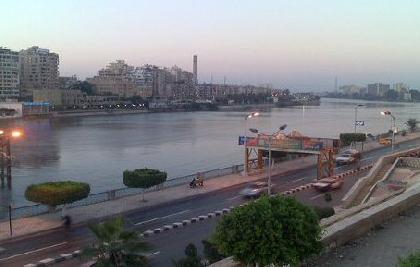
 El Menia City or the Bride of Upper Egypt is the capital of El Minia Governorate located 250km to the south of Cairo. It is a city of a great history that dates back to ancient Egyptian times and was known as Menat Khufu and in the New Kingdom, It was the center from which Akhenaton started his revolution of unifying the ancient Egyptian gods in one god called Aton. At that time, it was the cult of worshiping it and there are numerous temples for worshiping the sun god Aton throughout El Minia especially in Tell El Amarna and Beni Hassan archeological sites.
El Menia City or the Bride of Upper Egypt is the capital of El Minia Governorate located 250km to the south of Cairo. It is a city of a great history that dates back to ancient Egyptian times and was known as Menat Khufu and in the New Kingdom, It was the center from which Akhenaton started his revolution of unifying the ancient Egyptian gods in one god called Aton. At that time, it was the cult of worshiping it and there are numerous temples for worshiping the sun god Aton throughout El Minia especially in Tell El Amarna and Beni Hassan archeological sites.

Within El Minia City one can enjoy visiting El Mayteen Cemetry, one of the major tourist places, and other mosques such as El Umrah Mosque and El Lammati Mosque, the oldest mosques of the city of magnificent Islamic decorations and architectural style. Nowadays, El Minia is one of the major cities in Upper Egypt that is provided with all essential needs and facilities and encloses a university and a hospital of all highly advanced technologies.

The major economic resources for the city are industry, agriculture and trade. It is renowned for soap, sugar and perfume industries in addition to textile ginning and other industries depending on agricultural crops produced in the city.
El Fekria

El Fekria is one of the cities of El Menia Governorate that locates on the western bank of the Nile in Upper Egypt. It encloses a wide range of agricultural lands and the main economic resources for it are agriculture and trade. The majority of its inhabitants are Muslims but some of them are christians.
El Edwa
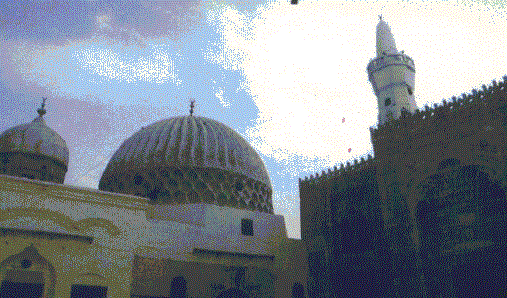
El Edwa is one of the cities of El Menia Governorate on the western bank of the Nile. It locates in a very strategic place on the road from Cairo to Aswan about 80km to the south-west of Maghagha city. El Edwa city encloses a wide range of agricultural lands and most of its inhabitants earn their living from farming and raising poultry, and trade.
Samallout
 Samalut is one of the cities of El Minia Governorate located about 25km away from El Menia City on the western bank of the Nile. Samallout encloses a number of Islamic and Coptic monuments that attract many visitors, locals and foreigners alike for visiting it. It is one of the popular attractions for Christians in particular since it is believed to be a sacred place where the Holy Family stopped at during their journey from Palestine to Egypt. The most prominent tourist site in Samallout is the Monastery of Virgin Mary with its church that dates back to the fourth century at Gabal El Tair or the bird mountain.
Samalut is one of the cities of El Minia Governorate located about 25km away from El Menia City on the western bank of the Nile. Samallout encloses a number of Islamic and Coptic monuments that attract many visitors, locals and foreigners alike for visiting it. It is one of the popular attractions for Christians in particular since it is believed to be a sacred place where the Holy Family stopped at during their journey from Palestine to Egypt. The most prominent tourist site in Samallout is the Monastery of Virgin Mary with its church that dates back to the fourth century at Gabal El Tair or the bird mountain.
El-Ashmunein
El-Ashmunein is an archeological site, near the city of Mallawi in El Menia Governorate. During the Old Kingdom, it was named 'Khmunw' and in the Greek times its name was 'Hermopolis Magna'. The city was the sanctuary of god Thuth (or Djehuty), the god of wisdom, writing and announcing who is sometimes represented by a heron and others by a baboon. In the city of Khmun, the Ogdoad of Eight Gods (a group of eight primeval deities comprising four frog-gods and four snake-goddesses) formed the creation myth. Here, only the ruins of a mud-brick temple have survived from the Old Kingdom Period. Besides the remains of the city, there are an open museum, a Greek-styled Coptic basilica, the remains of the Temple of Djehuty as well as other remains of the Roman Agora.
El-Bahnasa
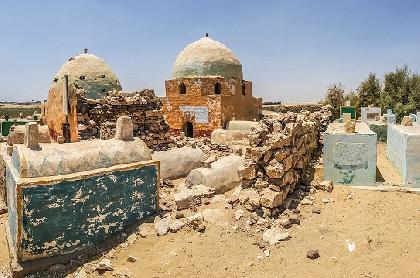
 El-Bahnasa is one of the cities of El Menia Governorate on the Western Bank of the Nile in Upper Egypt. It is located about 160 km away from Cairo on the road between Maghagha and Beni Mazar. In Ancient Egypt, its name was 'Pr-Medjed' which was driven from the name of a fish that was thought to have swallowed the penis of Osiris. In Greek times, it acquired the name 'Oxyrhynchus'. The city encloses one of the largest archeological sites in Minia where more than 100,000 papyrus fragments (now housed at the Sackler Library, Oxford) were found. Beyond the city limits and during many centuries, the people of Oxyrhynchus dumped garbage that contained various materials among which were papyri dealing with a vast collection of social, political and administrative issues.
El-Bahnasa is one of the cities of El Menia Governorate on the Western Bank of the Nile in Upper Egypt. It is located about 160 km away from Cairo on the road between Maghagha and Beni Mazar. In Ancient Egypt, its name was 'Pr-Medjed' which was driven from the name of a fish that was thought to have swallowed the penis of Osiris. In Greek times, it acquired the name 'Oxyrhynchus'. The city encloses one of the largest archeological sites in Minia where more than 100,000 papyrus fragments (now housed at the Sackler Library, Oxford) were found. Beyond the city limits and during many centuries, the people of Oxyrhynchus dumped garbage that contained various materials among which were papyri dealing with a vast collection of social, political and administrative issues.

Multiple important texts were found in Oxyrhynchus, among which are: - poems of Pindar - fragments of Sappho and Alcaeus - larger pieces of Alcman, Ibycus, and Corinna - remains of the Hypsipyle of Euripides - fragments of the comedies of Menander - A large part of the Ichneutae of Sophocles - The oldest and most complete diagrams from Euclid's Elements - A life of Euripides by Satyrus the Peripatetic - Comedies of the Athenian playwright Menander (342–291 BC). - The First Epistle of John - The Apocalypse of Baruch - The Gospel according to the Hebrews - The Shepherd of Hermas - A work of Irenaeus - Many early Christian hymns, prayers, and letters. The most remarkable item that have been found on the lands of that city is the statue of a sharp-nosed fish that is supposed to be worshiped in that city. Some of the ancient Egyptian myths narrates that this is the fish that ate the phallus of Osiris after his brother Seth cut his body into pieces and threw him in the Nile.
Sheikh Abada
 The Village of Sheikh Ibada is one of the modern villages on the eastern bank of the Nile few meters away from Mallawi City in El Menia Governorate. It carries that name because of the existence of Sheikh Ebada Mosque that was established in the early Islamic era by the sheikh. It is the birthplace of Maria El Qebtiya, the Egyptian wife of Prophet Mohamed. To the east of the village stand the remains of Antinopolis town that was established by Emperor Hadrian in 130 AD for deifying his friend Antinous who drowned in the Nile. By the passage of time the city was completely covered until the Napoleonic Expedition excavated the archeological site and discovered some of the pillars and two temples and many other remains reflecting the Roman style of decoration on it. Many excavation works have been made and some columns and parts of temples that date back to the New Kingdom period were found and reused in some churches later. Sheilh Ibada Archeological site was once enclosing a temple for Ramses II, but it has been destroyed in the 19th century. In the Islamic period.
The Village of Sheikh Ibada is one of the modern villages on the eastern bank of the Nile few meters away from Mallawi City in El Menia Governorate. It carries that name because of the existence of Sheikh Ebada Mosque that was established in the early Islamic era by the sheikh. It is the birthplace of Maria El Qebtiya, the Egyptian wife of Prophet Mohamed. To the east of the village stand the remains of Antinopolis town that was established by Emperor Hadrian in 130 AD for deifying his friend Antinous who drowned in the Nile. By the passage of time the city was completely covered until the Napoleonic Expedition excavated the archeological site and discovered some of the pillars and two temples and many other remains reflecting the Roman style of decoration on it. Many excavation works have been made and some columns and parts of temples that date back to the New Kingdom period were found and reused in some churches later. Sheilh Ibada Archeological site was once enclosing a temple for Ramses II, but it has been destroyed in the 19th century. In the Islamic period.
Mallawi
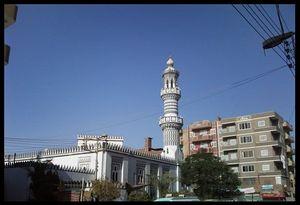
 Mallawi is one of the cities in El Menia Governorate on the western bank of the Nile. It is one of the major cities of the governorate that encloses a large number of small towns, cities and important archeological sites. It is bordered with Abu Qerqaz Center, South with Deir Mawas, and about 298km away from Cairo. The main economic resources for Mallawi are driven from agriculture and textile industry.
Mallawi is one of the cities in El Menia Governorate on the western bank of the Nile. It is one of the major cities of the governorate that encloses a large number of small towns, cities and important archeological sites. It is bordered with Abu Qerqaz Center, South with Deir Mawas, and about 298km away from Cairo. The main economic resources for Mallawi are driven from agriculture and textile industry.
Maghagha
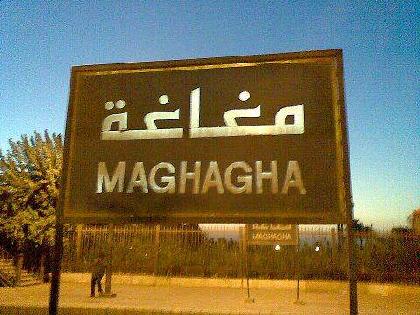
 Maghagha is one of the important cities in El Menia Governorate located about 190km away from Cairo City. It is bordered from the north with El Fashn administrative Center, from the south with Bani Mazar, and from the west with El Edwa. It comprises of a number of towns and villages and encloses a wide range of agricultural lands.The major economic resources of the village are agriculture, carpets weaving, cotton ginning industry, Sugar factory, and many other food industries. The city also encloses some tombs dating back to the Old Kingdom in ancient Egypt and many Coptic Cemeteries tracing back to the 8th century.
Maghagha is one of the important cities in El Menia Governorate located about 190km away from Cairo City. It is bordered from the north with El Fashn administrative Center, from the south with Bani Mazar, and from the west with El Edwa. It comprises of a number of towns and villages and encloses a wide range of agricultural lands.The major economic resources of the village are agriculture, carpets weaving, cotton ginning industry, Sugar factory, and many other food industries. The city also encloses some tombs dating back to the Old Kingdom in ancient Egypt and many Coptic Cemeteries tracing back to the 8th century.
Zawyet El-Maiyitin
The archeological site of the cemetery of Zawyet El Maiyitin or Zawyet El Amwat lies on the east bank of the Nile about 7km southward Menia city. The area was used since the Predynastic times and until the Ptolemaic Period since it was the capital of the 16th Dynasty in ancient Egypt. The small step pyramid of the Third Dynasty that is assumed to be established by King Huni is one of the most attractive structures in this area. Interestingly, the area of Zawyet El Mayitin was once the necropolis of prominent officials in the New Kingdom and later as a cemetery for Muslims and there are still some rock-cut Pharaonic tombs and domed tombs there. On this archaeological site there are some remains for the Temple of Amenhotep dedicated to Horus in the city of Hebnew. The remains of the temple indicates that it has been restored by his successor Seti I in the 19th Dynasty since the cartouche of Seti is depicted in various fragments there. In the vicinity of the remains of Amenhotep Tomb there are some rock-cut tombs dating back to the new Kingdom too including the Tomb of Nefersekheru, renowned sctibe in the 18th Dynasty and the Tomb of Khunes.
Deir El Bersha

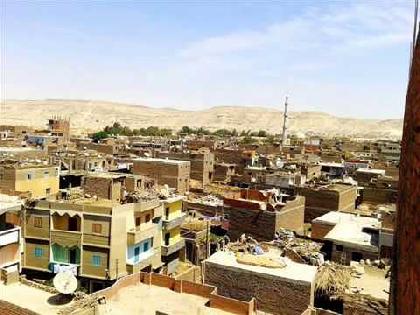
The village of Deir El-Bersha lies on the east bank of the Nile, in Minia Governorate nearby the city of Mallawi. The area occupies a remarkable position among the other cities in Minia due to the numerous limestone quarries next to it and the fascinating 39 rock-cut tombs necropolises of which are similar in style to the later tombs at Beni Hassan. The tombs date to the Old Kingdom , First Intermediate Period and the Middle Kingdom, especially the Twelfth Dynasty.
Beni Mazar

Beni Mazar is one of the cities of Minia Governorate that locates next to Maghagha and Mattay cities on twh bank of the Nile. It encloses a large number of slamic and Coptic monuments including El Sabaa Banaat Tombs, Sidi Gafaar Tomb and Virgin Mary tree and many other monuments. Beni Mazaar encloses a wide range of agricultural lands and is famous for producing a number of traditional crops such as wheat,corn, cotton and various types of fruits and vegetables.
Deir Mawas

Deir Mawas is one of the cities of Minia Governorate on the western bank of the Nile. It has a great history due to the great role of its inhabitants in their revolution against the English Occupation in 1919. The English Army executed a large number of its citizens in 18 March. so after the country obtained independence, that date was declared the national day of the governorate. The major economic resource for the city is agriculture and it is famous for planting several traditional crops like rice and wheat in addition to other crops like sugarcane. The city encloses a large number of christian inhabitants due to the existence of many monasteries in it.
Matai City
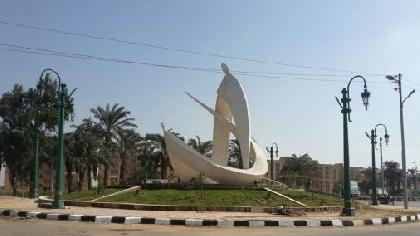
 Matai is one of the cities of El Minia Governorate on the western bank of the Nile in upper Egypt. It encloses a wide range of agricultural lands and comprises of a large number of small towns and villages such as Hilwan and Abu Shehata villages.
Matai is one of the cities of El Minia Governorate on the western bank of the Nile in upper Egypt. It encloses a wide range of agricultural lands and comprises of a large number of small towns and villages such as Hilwan and Abu Shehata villages.
More about Minya Travel Guide
Tomb of Hoya (Stewar of Queen Tiye)
Hoya was one of the prominent officials in the middle kingdom who acquired numerous positions including the "Steward of Queen Tiye, Akhenatens mother,...+
Read MoreTomb of Maya
Maya was one of the prominent political figures in the New Kingdom in the reign of Akhenaton who acquired numerous positions and held many t...+
Read MoreTomb of Tutu
The Tomb of Tutu is one of the remarkable tombs in the south tombs of Tel El Amarna that looks like the Tomb of Mahu. This tomb was established by Tut...+
Read MoreTomb of Pentu
Pentu was one of the important figures in the New Kingdom who held many titles including the Royal Scribe, the Physician and the Chief Servitor. Like...+
Read MoreTomb of Pan-Hesy
Pan-Hesy was one of the prominent political figures during the New Kingdom and held the position of the Chief Servitor of the Aten. The Tomb of Pan-He...+
Read MoreTomb of Meri-Ra II
The tomb of Meri-Ra II locates in Tel El Amarna nearby the tomb of Huya. Meri-Ra II was one of the prominent figures in the reign of Akhenaton who hel...+
Read MoreTomb of Meri-Ra
Meri-Ra was one of the political figures who hold numerous titles including High Priest of the Aten and Fanbearer of the King during the reign of Akhe...+
Read MoreTomb of Mahu
Mahu was the Chief of Police of Akhetaten in the New Kingdom. Though small, his tomb is one of most complete tombs in the Tell El Amarne Area in El Me...+
Read MoreTomb of Ipy
Ipy was Royal Scribe, High Steward, and Overseer of the Harem of Akhenaton. The unfinished Tomb of Ipy is located in Tell El Amarna area in El Menia....+
Read MoreTomb of Ay in Tell El Amarna
Ay was a high official in the court of Akhenaton. Succeeding Tutankhamun on the throne, he was a member of the royal family and thus, buried in his ro...+
Read MoreTomb of Any
The Tomb of Any, the Royal Scribe, was never finished. One of the most remarkable depictions shows Anubis, god of mummification standing beneath the d...+
Read MoreTomb of Petosiris
Petosiris, whose name is P- di-wsir (or the Gift of Osiris), was 'High Priest' of Thoth. He built a tomb for himself, his father Sh...+
Read MoreTomb of Ahmose
Ahmose was Fanbearer on the Kings Right Hand' and Royal Scribe at Akhetaten during the reign of Akhenaton. The Tomb of Ahmos consists of a cruciform l...+
Read MoreThe Royal Tomb of Akhenaton
The Royal Tomb of Akhenaton is located six kilometers up the Royal Wadi (in Amarna) which separates the hills surrounding Akhetaton from the...+
Read MoreWorkmen Village
The archaeological site of Deir El Madina was the center for the artisans and contractors of tombs in the New Kingdom Thebes. In ancien...+
Read MoreAntinopolis Ruins
Antinopolis City dates back to the reign of Emperor Hadrian in the first half of the second century for deifying the memory of the death of his loy...+
Read MoreTemple of Ramsses II
Temple of Ramsses II was one of the great structures constructed in the Greco-Roman City of Antinopolis at the reign of Emperor Hadrian. This temp...+
Read MoreTomb of Isidora
Behind the Tomb of Petosiris, lies the Tomb of Isidora which dates back to the Ptolemaic Period. There is an absorbing story (almost legendary) ab...+
Read MoreThe Ibis Catacombs at Tuna El Gabal
The Ibis catacombs are the most remarkable places in Tuna El Gabal for enclosing the mummified bodies of Ibis and the Baboon. These birds were con...+
Read MorePlaces to visit in Minya
Deir Abu Hennes Deir Abu Hennes or St John's Monastery is one of the popular tourist attractions at Gabal El Teir Area. It is one of the...+
Read MoreMallawi Regional Museum
Mallawi Regional Museum is one of the prominent tourist attractions in Mallawi. It comprises of two floors divided into four halls and located on...+
Read MoreTomb of Khnemhotep II
Khnemhotep II was the governor of Egypt after Amenemhat I in the Middle Kingdom. He was given many titles reflecting his supreme pow...+
Read MoreTomb of Khety
Khety was the son of Paqet III and the governor of the 11th Dynasty. Besides the funeral and offerings scenes, there are numerous interesting scen...+
Read MoreTomb of Baqet III
Baqet III was a local governor of Menat-Khufu or Menia Governorate currently during the Eleventh Dynasty and he was successes by his son Khety I....+
Read MoreTomb of Amenemhat
Amenemhet (or Ameni) was a monarch under Sesostris I of the Twelfth Dynasty who became the first king at that dynasty. He made the city of Itj-taw...+
Read MoreOpen Air Museum
A small open air museum in Hermopolis Magna occupies the site of the old archeological mission house. In the museum, blocks and massive statues ar...+
Read MoreVisiting Tuna El-Gabal
Tuna El-Gabal is a village and archeological site near the city of Mallawi, in El Menia Governorate in Upper Egypt. It was the necropolis of...+
Read MoreThe Great Temple of Thoth
The Great Temple of Thoth is completely destroyed as it was used during centuries as a quarry for later buildings. From the Middle kingdom, one ca...+
Read MoreBeni Hassan
Beni Hassan lies on the east bank of the Nile, 25 km south of the city of Menia, in Upper Egypt. Famous for its catacombs, its archeological...+
Read MoreTel El Amarna
Akhetatun (Tel El Amarna currently) is an archeological site stretching on the east bank of the Nile, in El Menia Governorate. It is located about 5...+
Read More




